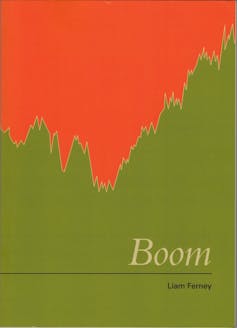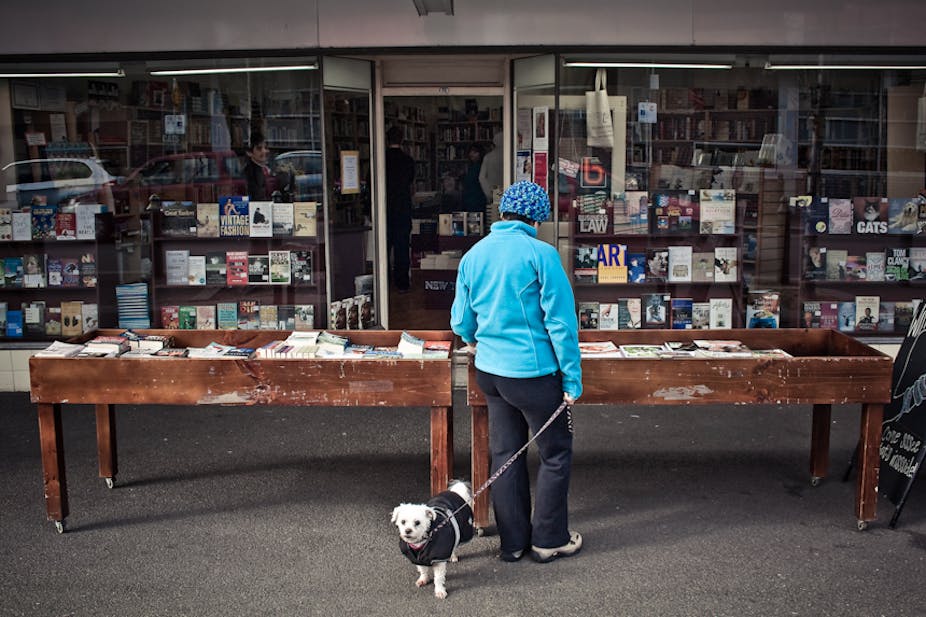Do you think of poetry as a quaint hobby or an antiquated riddle? Think again. If you haven’t been keeping up with Australian poetry this year, you’re missing some of the country’s most exciting avant-garde art-making.
Just last week, Fiona Hile scooped the Kenneth Slessor Prize for her first full-length collection of poems, Novelties.
Bagging scraps from French theorists and shoe-gaze music, Hile’s poems – such as Entrances North, below – are spells that mix a self-deprecating sense of humour with a taste for bitter reflection. They sound like the thoughts you have returning home drunk: spun with epiphanic insight, lost in a moment to the vagaries of self-awareness:
The indifferent surf gambles on the negative
gearing of light over sound. Pale ontologies in
multiple horizons reverse fossilized sprays of
ancestral Fred Williams. The sea swallows.
Wet-suited seals snuffle at ruffle-edged skirts.
Your G-string of land, newly frayed and fickle.
‘Why don’t the four of us buy that unit over-
looking the ocean?’ Your son splinters in the
complex pool. Bone-crack heckling kindergarten
survivalists. You are the view of the surf club car
park.

Poet AJ Carruthers has written of this poem that, “it opens holes in knowledge”. Perhaps what he means is that Hile’s poetry shows how perception can seem rock-solid one moment, bottomless the next.
For Hile, those supposedly Australian certainties of coast, ocean, property and children are not so sure after all. Our “ontologies” – the branch of philosophy that attempts to explain being – are “pale”. Hile doesn’t simply present this as a rhetorical idea; she demonstrates it through language itself. The more one reads the lines above, the more their sun-stunned images reveal references to dissolution.
As in visual art, cinema or music, a poem is challenging and original when it not only explores the boundaries of a theme, but also pushes the possibilities of form.
Convening this year’s Peter Porter Poetry Prize award ceremony on May 7, Australian Book Review editor Peter Rose commented upon the bold form of the winning poem, and how Arrival Platform Humlet by Jessica L Wilkinson is not an easy poem to reproduce in print.
Its experimental shape and texture narrates the biographical moment behind the titular composition by pianist Percy Grainger. Using a giddy mix of typography and shunting spatial arrangement, Wilkinson’s poem dismisses expectations of what a poem might look like.
In doing so, Wilkinson redefines the medium of poetry. Can it also act as a musical score? Can it also function as a piece of historical biography?
The Australian reinvention
These poems represent no single “Australian” style; far from it. They find myriad ways to reinvent the form. Liam Ferney, yet another Kenneth Slessor shortlister, makes the poetic line bounce and hum, like a telephone wire in the wind. The following is an excerpt from Heartbreaker, featured in his recent book, Boom:
stalking the late summer streets with a mobile phone
and a credit card stepping off the gutter
the blinkered darkness of a hoodie’s overhang
it is better to avoid the tabloids their smiling faces
you have a suspicion it is a diversion
the powers that be the spin their sophistry

What’s he up to? It doesn’t really matter, so long as it works. We subconsciously know how a series of words imprints itself on our retina or enters our bloodstream. To articulate it is another kind of pleasure, and one that points out the exacting skill in new Australian poetry.
There’s so much going on in just these six lines; the first one is long enough to make us feel the stride of the speaker from the footpath, across the nature strip and down onto the road.
Since Ferney shirks punctuation, this loping pace continues, line over line; as in the walker’s eye, it accumulates unstoppable impressions, while quickly “stalking” on, “blinkered” with “suspicion”.
A sense of growing anxiety, like being followed down that dark suburban street, climaxes with the traffic-jam of words in the last line. You can imagine a paranoid stranger approaching with a pamphlet, gurgling about “the powers that be the spin their sophistry” as you try to get clear.
Embedded within this rhythm and pace is the sonorous quality of Ferney’s lines. In each, the sibilance of “s” is repeated, or alliterated, like whispering voices.
Finally, our mind’s eye focuses on the imagery: Ferney turns or enjambs the first line so that, abruptly, we no longer see a person but “a credit card stepping off the gutter”. Is this what we each boil down to, in the “smiling” eyes of the tabloids?
There is a wonderful sense of Australian Gothic here, as Ferney infects those potentially beautiful “late summer streets” with a sense of menace. The speaker’s face is obscured by “a hoodie’s overhang”: a stereotype of threatening youth, here the image is repurposed as one of threatened self-containment; the head as bungalow, the hoodie as awning.
And while this high-quality of work is being produced by our poets, it’s not all bounty in the current Australian poetry landscape, of course.
Competition for unpredictable funding means that little magazines may become established but not necessarily sustainable; online publishing, without sales income, relies heavily on subsidisation; poets will always have to buy copies of their own books to help with distribution and award entries; and poets tend to accept that publication frequently goes unpaid.
But this seems a small price – and maybe even a necessary one – for the presently robust poetry culture. Frequency and quantity mark this moment of local poetry publishing; there is a renewed interest in the quality of presentation and in making accessible the large amount of poetry that is taking risks and engaging inventively with the history and currency of the poetic form.
As poet Kate Middleton suggests:
For people who want to “like” poetry more, I suppose it’s just important to recognise that not every poem will speak to you, but that doesn’t mean that the next one you try might not illustrate something of your world … to find poetry that represents the world in which we live now, poetry that shows us the lyrical possibilities of, say, four-wheel-drives, or internet correspondence, or travel by airplane, or contemporary science.
If you consider yourself to have an interest in the aesthetic life of contemporary Australia, that picture is incomplete without the haunting, cute, ironic, philosophical, moody, hallucinogenic, narrative pulse of its current poetry. Read on.
Bonny Cassidy will be presenting Writing Night School: Ekphrasis Poetry with Bonny Cassidy on June 2 at Melbourne’s Emerging Writers’ Festival

